Install Google Chrome on Ubuntu 22.04/20.04 From Command Line
This tutorial is going to show you how to install Google Chrome on Ubuntu 20.04 LTS Focal Fossa. The Ubuntu software app in 20.04 doesn’t support installing local deb packages anymore, so we have to use the command line to install deb packages.
Personally, I don’t think this is a good direction for Ubuntu. In my opinion, we should use deb package by default, and only use Snap package when there’s no native deb package for a software application. Dropping support for deb packages would make users use the command line, which is not very user friendly for Linux beginners. This leads me to think that we should recommend Linux Mint rather than Ubuntu to Linux newbies.
Install Google Chrome on Ubuntu 22.04/20.04 LTS from the Command Line
First, open a terminal window from the applications menu. You can also press Ctrl+Alt+T to open a terminal window.
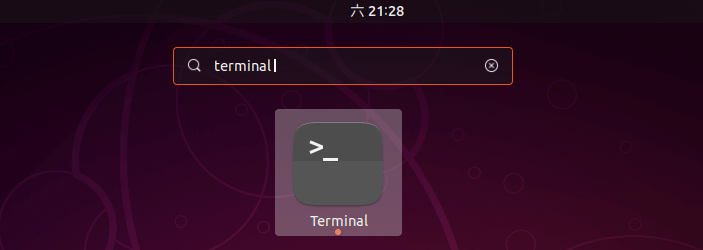
Then enter the following command in terminal to create a source list file for Google Chrome browser. Nano is a command-line text editor, which allows you to edit text files in the terminal. You will need to enter your password.
sudo nano /etc/apt/sources.list.d/google-chrome.list

Next, copy the following line and paste it into the google-chrome.list file.
deb [arch=amd64] http://dl.google.com/linux/chrome/deb/ stable main
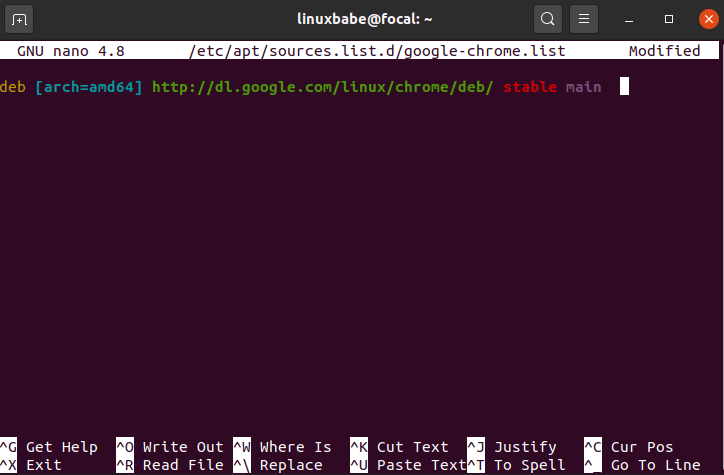
To save the file in Nano text editor, press Ctrl+O, then press Enter to confirm. Next, press CTRL+X to exit. After that, run the following command to download Google’s signing key.
wget https://dl.google.com/linux/linux_signing_key.pub
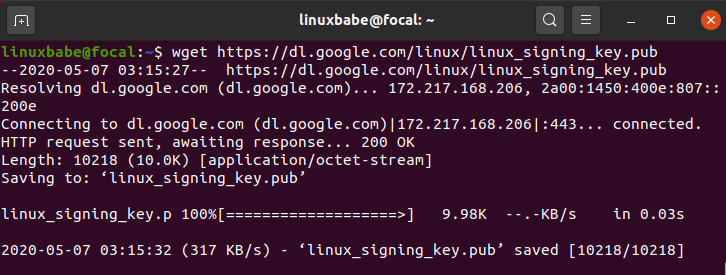
Then use apt-key to add it to your keyring so the package manager can verify the integrity of Google Chrome deb package.
sudo apt-key add linux_signing_key.pub
Now update package list and install the stable version of Google Chrome.
sudo apt update sudo apt install google-chrome-stable
If you want to install the beta or unstable version of Google Chrome, use the following commands:
sudo apt install google-chrome-beta sudo apt install google-chrome-unstable
Now search Google Chrome from the applications menu.
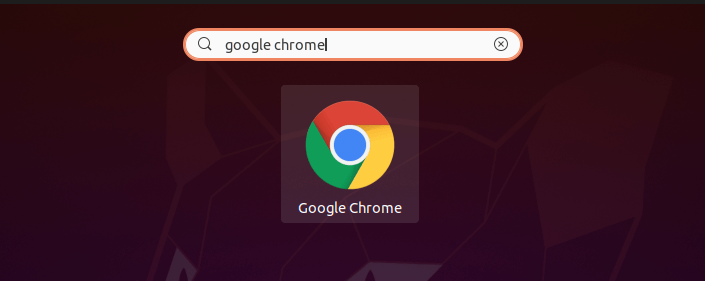
And start Google Chrome.
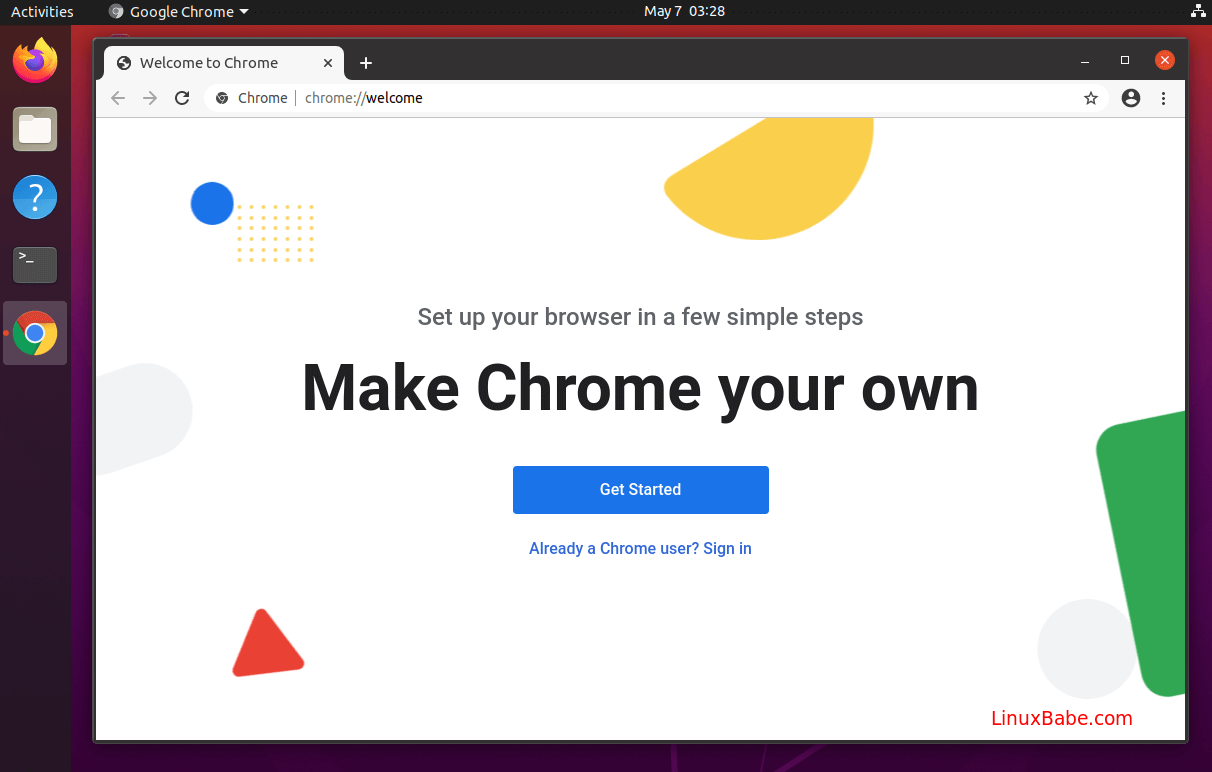
To start Chrome browser from the command line, run:
google-chrome-stable
How to Restore User Session on Startup
If you have multiple tabs open in Google Chrome and you want them to automatically restore on the next restart, then go to Settings -> On startup. Choose Continue where you left off.
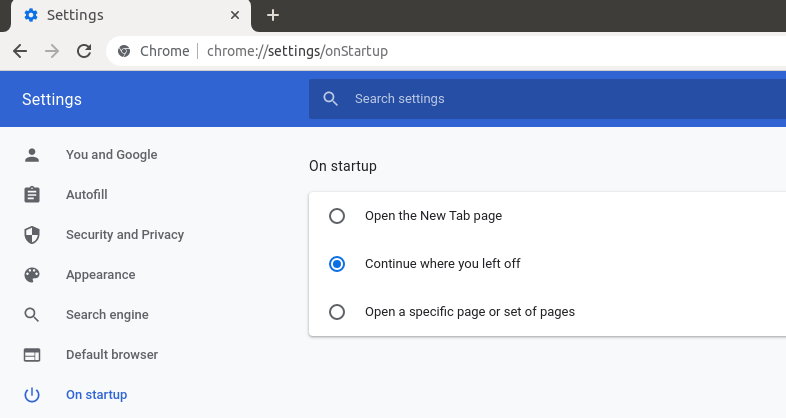
Install Other Web Browsers
- Install Opera on Debian/Ubuntu/Linux Mint and Enjoy Free Unlimited VPN
- How To Install Vivaldi on Ubuntu and How To Use It
- How to Install Firefox Developer Edition on Ubuntu & Linux Mint
- How To Manually Install Firefox Browser on Linux
- How to Install Tor Browser on Ubuntu or Any Linux Distro
Wrapping Up
I hope this tutorial helped you install Google Chrome browser on Ubuntu 22.04/20.04 LTS, either from the graphical user interface or using the command line. As always, if you found this post useful, then subscribe to our free newsletter to get new tutorials. Take care 🙂



Ubuntu 20.04 LTS would have been perfect if it wasn’t for their insistence on using snaps only. The store should have made it optional.
I read somewhere about stripping snaps out of 20.04 completely and going to debs only with Flatpak as an option. Maybe I’ll clean install, perform that procedure and see how everything works after that.